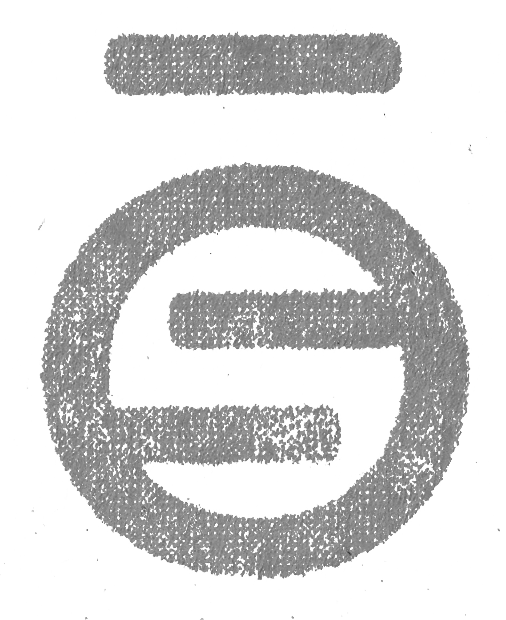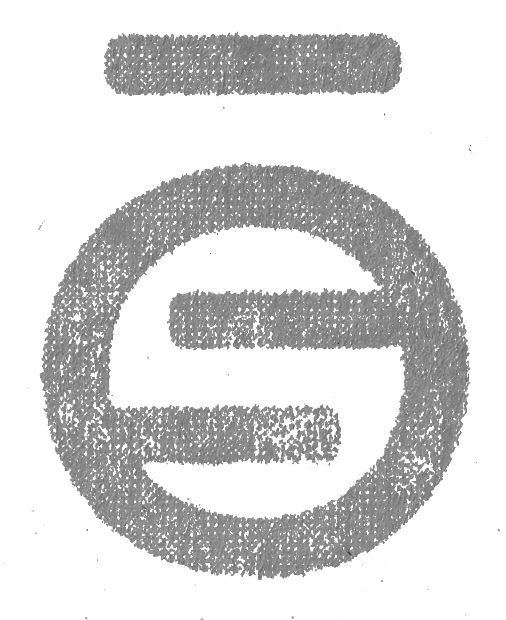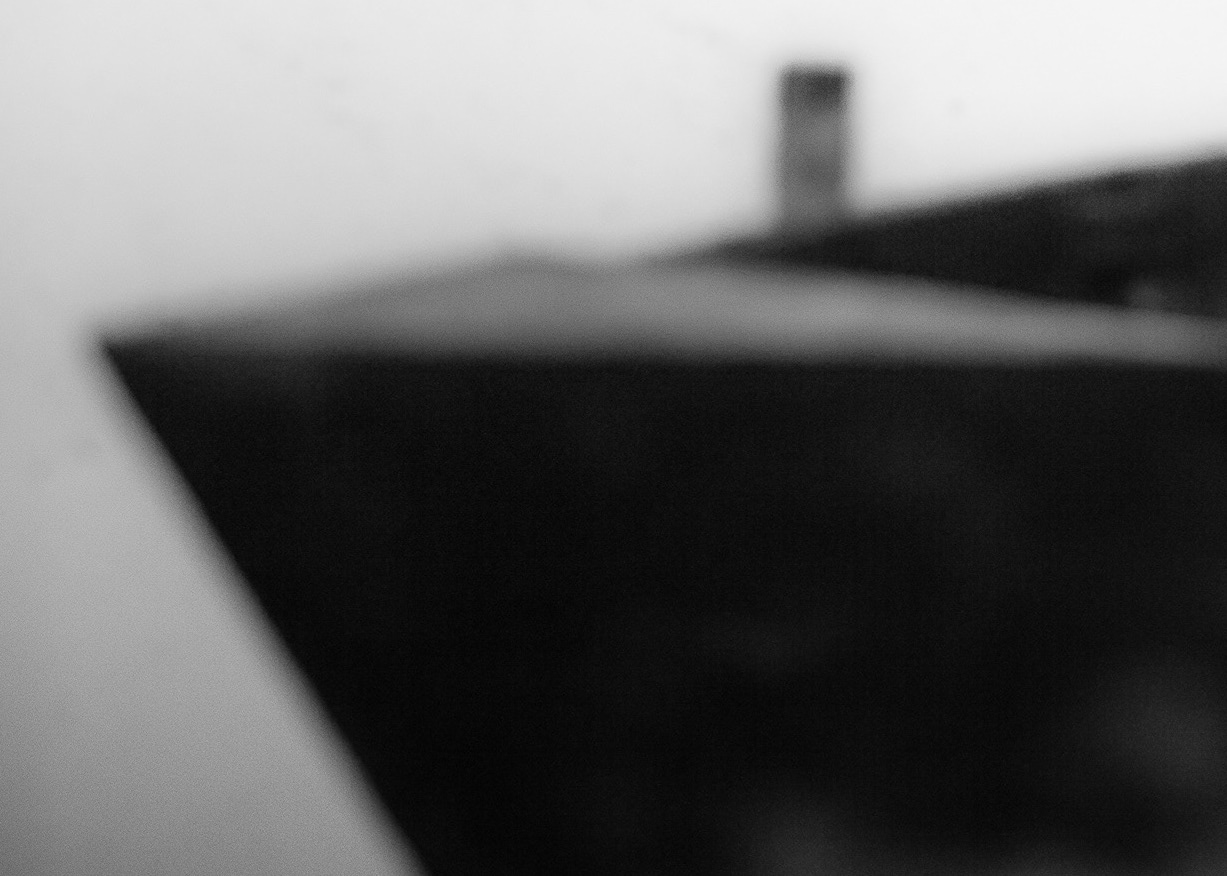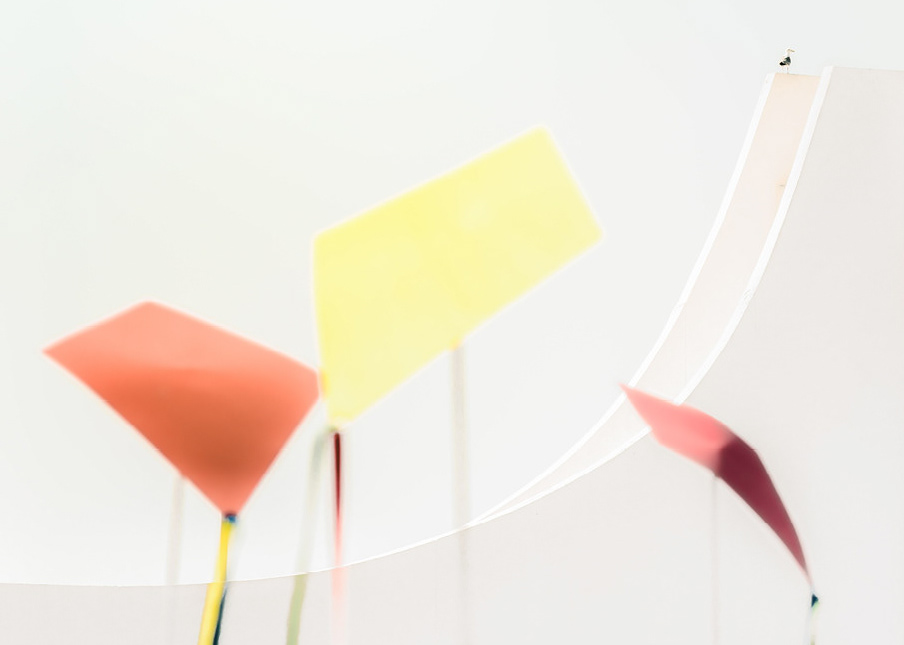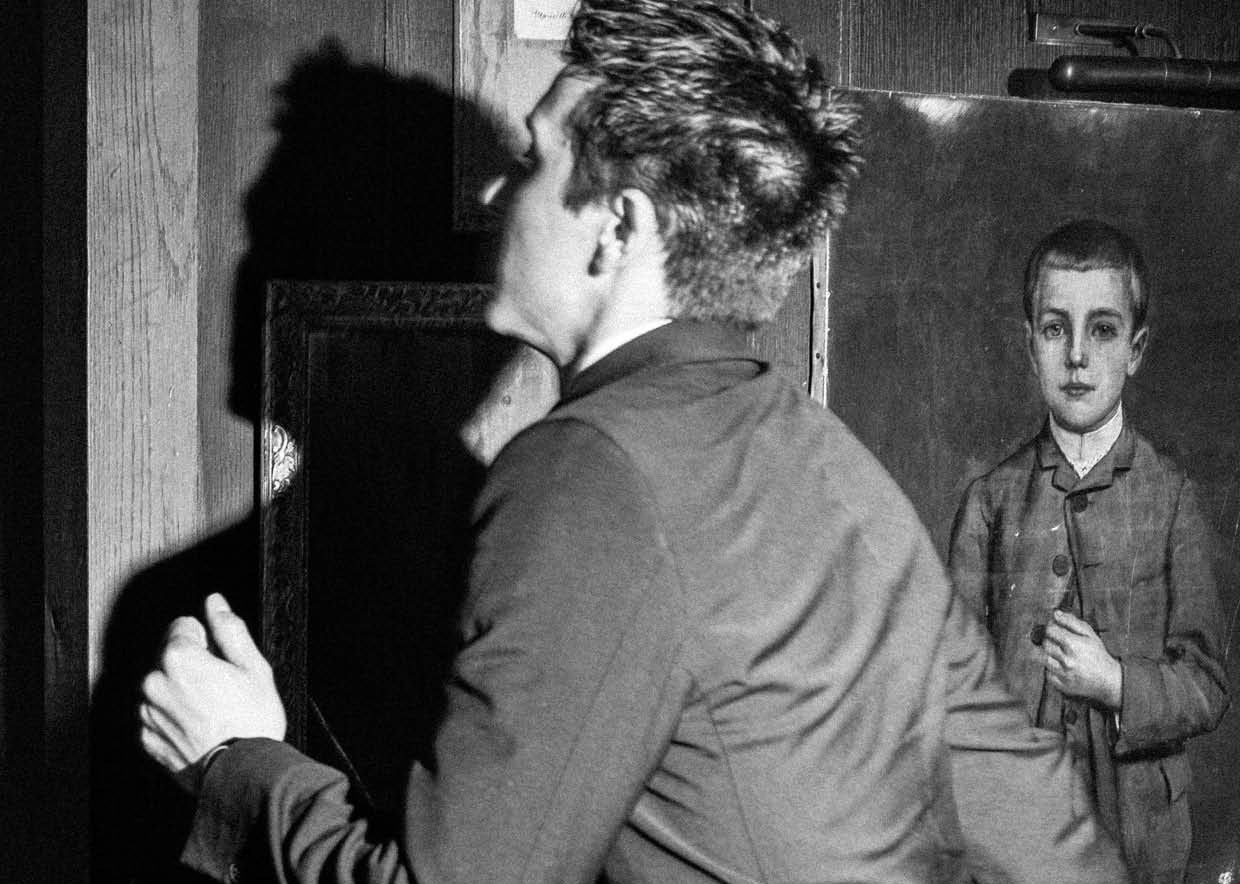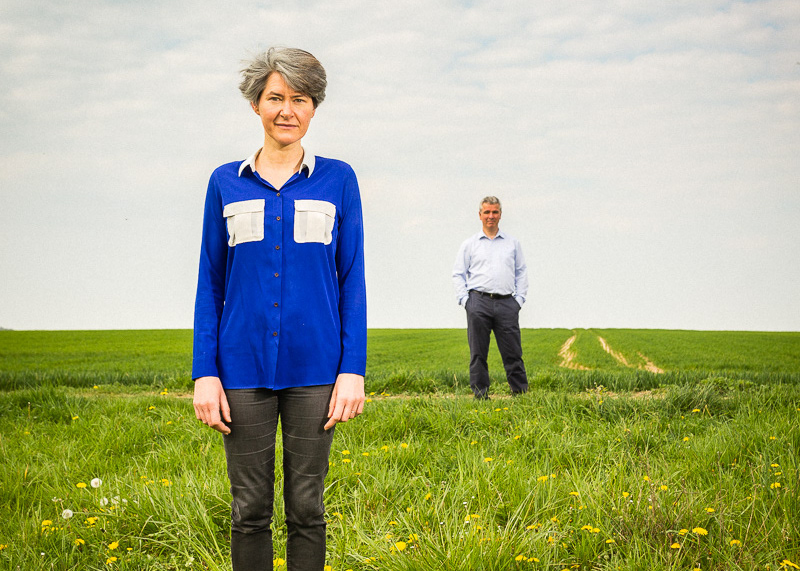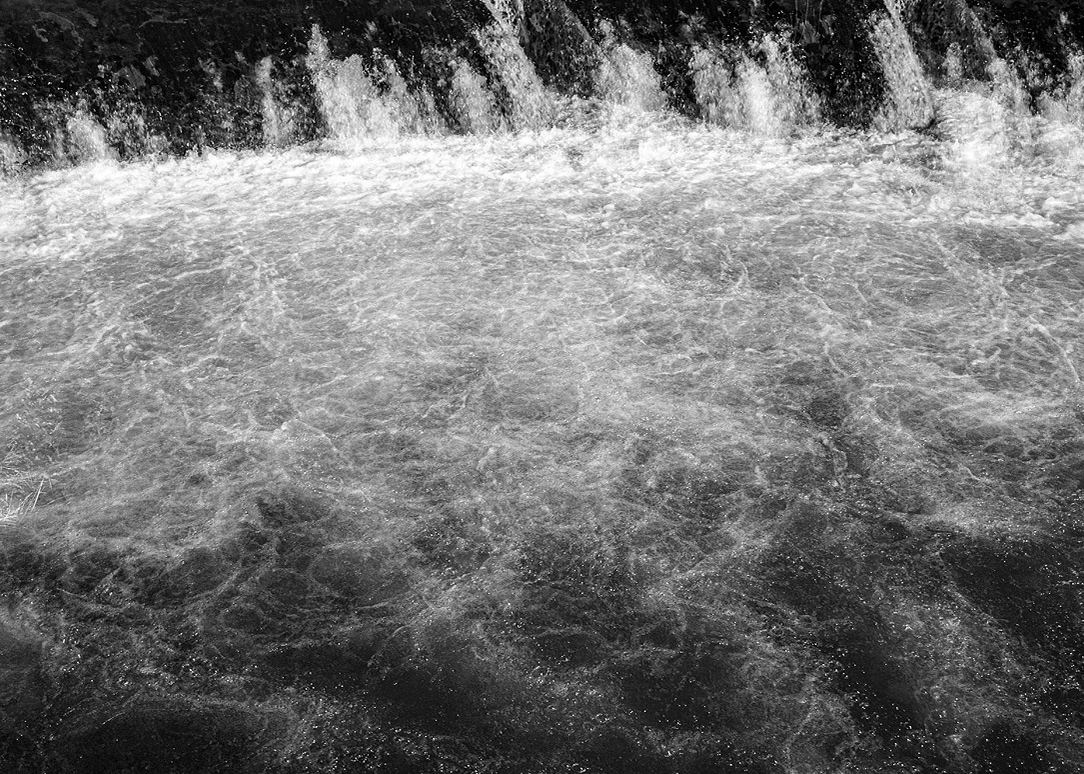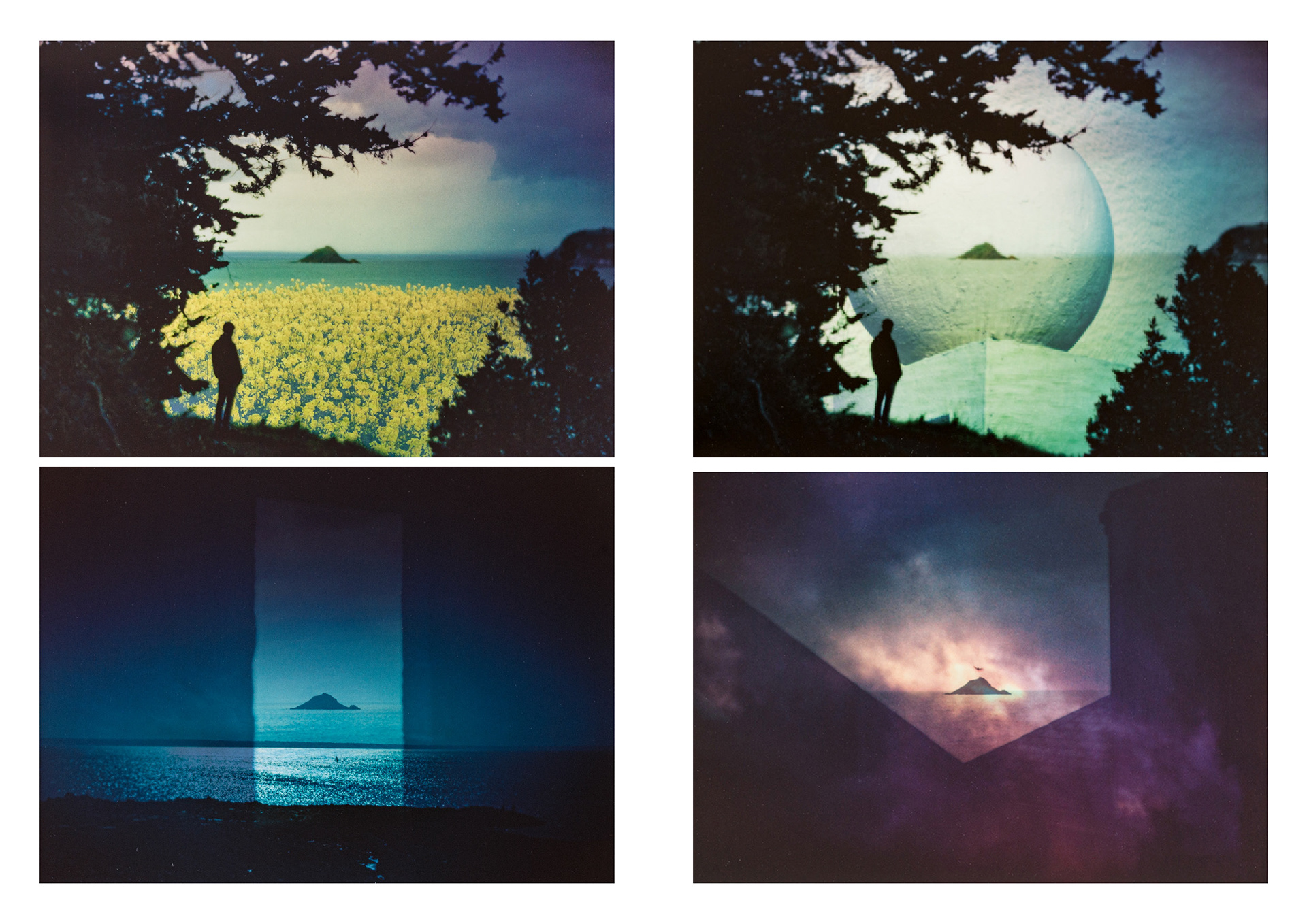
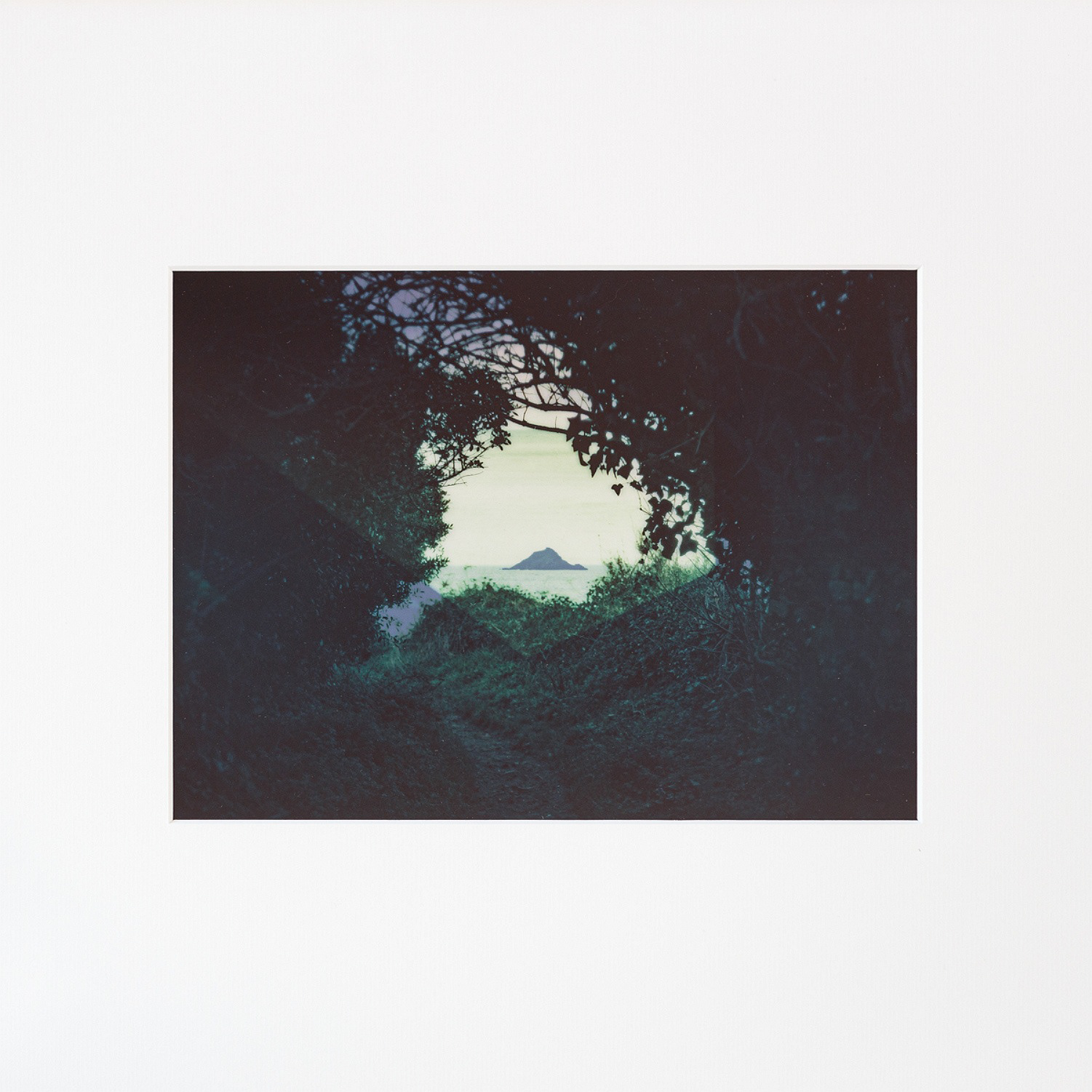
At the end of the Second World War, France enters the period of reconstruction, supported by the U.S. Marshall Plan. Mainly dedicated to the reconstruction of cities devastated, the plan focuses on the relocation of the population. Architects, engineers and builders then draw the new landscape of the cities, in a necessary agglomerate of concrete and steel. It is also the beginning of the era of plastic, whose manufacturing explodes in the fifties with the products furniture and household goods. It is today, with concrete and steel, the third most important man-made material, totaling 8.3 billion euros. tons produced since the 1950s, including 6.3 billion became waste, and only 9% of it became were recycled.
In 1946, Jean Dauphant, a cutler from Auvergne, has the idea of a cheap sandal, molded from a single plastic block to replace leather that has become rare.Exported at 80% in French West Africa as work shoes, all-terrain and resistant to the water, it reached the beaches in the sixties. La Sarraizienne (from the name of its village of invention) has several nicknames depending on the region : skeleton in Vendée, noodle in Auvergne, Mica with West Indies. Parisians call her Medusa for her appearance. Translucent, close to that of the gelatinous marine animal. The word jellyfish is derived from the mythological character Medousa [medousa]], the only deadly gorgonian whose head was bristling with snakes, to be compared with the tentacles of the invertebrate animal. Characterized by its dreadful ugliness and his look which had the gift of to petrify anyone who dared to look at it, it holds its name from the Greek 'medein' which means 'to think, to be concerned; she is said to be the one who meditates.
Passionate about seaside landscapes that are conducive to leisure and games as well as meditation, I have worn out if not misplaced a few pairs of jellyfish, grumbling against their irritating straps and small stones. stuck under the toes, until you start to work to photograph an iconic Breton rock by every weather, in all seasons, for two years - the Verdelet,emblematic of the Val-André resort (22), my harbor of attachment. I have dedicated this series to the memory of my father, deceased in 2017, due to Alzheimer's disease.that we have not been able to name. Buried memories that I kept, I retain in particular a stormy crossing and daring of the tombolo at the rising tide towards the age of five years, wearing my first jellyfish. The waves are I was afraid I would break up to my waist, I feared I would not be able to to the shore, my father helped me. I no longer liked crossing the passage, I always like to look at the rock. Equipped with the same silver soles, I realized this new series of images on the same territory, without preconceived idea, such as snapshots, collecting memories, reviving older ones, in the mind and with techniques and accessories inherited from the silver that I used to practice with the Canon AL1 body of my 20th birthday. I then printed these photographs on two supports - one baryta paper on one side, one film of the other, similar to slide film. Then I superimposed the two supports until creating new landscapes, impossible but plausible, radiant or dark, calm or tormented. They show beyond the real landscape we think we recognize so familiar is its subject matter. But something disturbs, or insists on dreaming: the landscape does not exist. Here the rock seems to fly, there it seems to float on the sand like a castle out of the ordinary, farther away from the walkers seem to look like they are on the "road" of a landscape unknown, whose stunning horizon would be the only fruit of intimate, secret feelings, still offering to meditate, always in front of a rock, abyss of secular memory and bitter of ephemeral imagination, impossible.
À l’issue de la seconde guerre mondiale, la France
entre dans la période de la reconstruction, soutenue par le plan Marshall américain. Principalement dédié à la reconstruction des villes dévastées, le plan se concentre sur le relogement de la population. Architectes, ingénieurs et bâtisseurs dessinent alors le nouveau paysage des villes, dans un agglomérat nécessaire de béton et d’acier. C’est aussi le début de l’ère du plastique, dont la fabrication explose dans les années cinquante avec les produits d’ameublement et de consommation courante. C’est aujourd’hui, avec le béton et l’acier, le troisième matériau fabriqué par l’homme, cumulant 8,3 milliards de tonnes produites depuis les années 1950, dont 6,3 milliards sont devenues des déchets et 9% seulement ont été recyclés.
entre dans la période de la reconstruction, soutenue par le plan Marshall américain. Principalement dédié à la reconstruction des villes dévastées, le plan se concentre sur le relogement de la population. Architectes, ingénieurs et bâtisseurs dessinent alors le nouveau paysage des villes, dans un agglomérat nécessaire de béton et d’acier. C’est aussi le début de l’ère du plastique, dont la fabrication explose dans les années cinquante avec les produits d’ameublement et de consommation courante. C’est aujourd’hui, avec le béton et l’acier, le troisième matériau fabriqué par l’homme, cumulant 8,3 milliards de tonnes produites depuis les années 1950, dont 6,3 milliards sont devenues des déchets et 9% seulement ont été recyclés.
En 1946, Jean Dauphant, un coutelier auvergnat,
a l’idée d’une sandale bon marché, moulée d’un seul
bloc de plastique pour remplacer le cuir devenu rare.Exportée à 80% en Afrique occidentale française comme chaussure de travail, tout terrain et résistante à l’eau, elle gagne les plages dans les années soixante.La Sarraizienne (du nom de son village d’invention) est affublée selon les régions de plusieurs surnoms: squelette en Vendée, nouille en Auvergne, Mica aux Antilles. Les parisiens l’appelle Méduse pour son aspect translucide proche de celui de l’animal marin gélatineux. Le mot méduse est un dérivé du personnage mythologique Medousa [medousa]], la seule gorgone mortelle dont la tête était hérissée de serpents, à comparer avec les tentacules de l’animal invertébré. Caractérisée par sa laideur épouvantable et son regard qui avait le don de pétrifier quiconque osait la regarder, elle tient son nom du grec ’medein’ qui signifie ‘songer, être préoccupé; on dit qu’elle est celle qui médite.
a l’idée d’une sandale bon marché, moulée d’un seul
bloc de plastique pour remplacer le cuir devenu rare.Exportée à 80% en Afrique occidentale française comme chaussure de travail, tout terrain et résistante à l’eau, elle gagne les plages dans les années soixante.La Sarraizienne (du nom de son village d’invention) est affublée selon les régions de plusieurs surnoms: squelette en Vendée, nouille en Auvergne, Mica aux Antilles. Les parisiens l’appelle Méduse pour son aspect translucide proche de celui de l’animal marin gélatineux. Le mot méduse est un dérivé du personnage mythologique Medousa [medousa]], la seule gorgone mortelle dont la tête était hérissée de serpents, à comparer avec les tentacules de l’animal invertébré. Caractérisée par sa laideur épouvantable et son regard qui avait le don de pétrifier quiconque osait la regarder, elle tient son nom du grec ’medein’ qui signifie ‘songer, être préoccupé; on dit qu’elle est celle qui médite.
Passionné des paysages de bord de mer propices aux
loisirs et aux jeux autant qu’à la méditation, j’ai
usé sinon égaré quelques paires de méduses, maugréer
contre leurs lanières irritantes et les petits cailloux coincés sous les doigts de pieds, jusqu’à entreprendre de photographier un rocher breton icônique par tous les temps, en toute saison, durant deux ans - le Verdelet, emblématique de la station du Val-André (22), mon port d’attache. J’ai dédié cette série à la mémoire de mon père, disparu en 2017, suite à une maladie d’Alzheimer que l’on n’a pas su nommer. Des souvenirs enfouis que je
gardais, je retiens en particulier une traversée houleuse et téméraire du tombolo à la marée montante vers l’âge de cinq ans, chaussé de mes premières méduses. Les vagues se brisaient jusqu’à ma taille, je craignais de ne pouvoir rejoindre le rivage, mon père m’a aidé. Je n’ai plus aimé traverser le passage, j’aime toujours regarder le rocher. Équipé des mêmes semelles d’argent, j’ai réalisé cette nouvelle série d’images sur le même territoire, sans
idée préconçue, comme des instantanés, engrangeant des souvenirs, en ranimant de plus anciens, dans l’esprit et avec des techniques et accessoires hérités de l’argentique que je pratiquais avec le boîtier Canon AL1 de mes 20 ans. J’ai ensuite tiré ces photographies sur deux supports - un papier baryté d’un côté, un papier film de l’autre, similaire au film des diapositives. Puis j’ai superposé les deux supports jusqu’à créer de
nouveaux paysages, impossibles mais plausibles, radieux ou sombres, calmes ou tourmentés. Ils donnent à voir au‑delà du paysage réel que nous croyons reconnaître tant son sujet peut être familier. Mais quelque chose dérange, ou insite au rêve : le paysage n’existe pas. Ici le rocher semble voler, là il semble flotter sur le sable comme un château hors‑norme, plus loin des marcheurs semblent airer comme sur « la route » d’un paysage inconnu, dont l’horizon médusant serait le seul fruit de sentiments intimes, secrets, offrant encore à méditer, toujours face à un rocher, abîme de mémoire séculaire et amer d’imaginaire éphémère, impossible.
loisirs et aux jeux autant qu’à la méditation, j’ai
usé sinon égaré quelques paires de méduses, maugréer
contre leurs lanières irritantes et les petits cailloux coincés sous les doigts de pieds, jusqu’à entreprendre de photographier un rocher breton icônique par tous les temps, en toute saison, durant deux ans - le Verdelet, emblématique de la station du Val-André (22), mon port d’attache. J’ai dédié cette série à la mémoire de mon père, disparu en 2017, suite à une maladie d’Alzheimer que l’on n’a pas su nommer. Des souvenirs enfouis que je
gardais, je retiens en particulier une traversée houleuse et téméraire du tombolo à la marée montante vers l’âge de cinq ans, chaussé de mes premières méduses. Les vagues se brisaient jusqu’à ma taille, je craignais de ne pouvoir rejoindre le rivage, mon père m’a aidé. Je n’ai plus aimé traverser le passage, j’aime toujours regarder le rocher. Équipé des mêmes semelles d’argent, j’ai réalisé cette nouvelle série d’images sur le même territoire, sans
idée préconçue, comme des instantanés, engrangeant des souvenirs, en ranimant de plus anciens, dans l’esprit et avec des techniques et accessoires hérités de l’argentique que je pratiquais avec le boîtier Canon AL1 de mes 20 ans. J’ai ensuite tiré ces photographies sur deux supports - un papier baryté d’un côté, un papier film de l’autre, similaire au film des diapositives. Puis j’ai superposé les deux supports jusqu’à créer de
nouveaux paysages, impossibles mais plausibles, radieux ou sombres, calmes ou tourmentés. Ils donnent à voir au‑delà du paysage réel que nous croyons reconnaître tant son sujet peut être familier. Mais quelque chose dérange, ou insite au rêve : le paysage n’existe pas. Ici le rocher semble voler, là il semble flotter sur le sable comme un château hors‑norme, plus loin des marcheurs semblent airer comme sur « la route » d’un paysage inconnu, dont l’horizon médusant serait le seul fruit de sentiments intimes, secrets, offrant encore à méditer, toujours face à un rocher, abîme de mémoire séculaire et amer d’imaginaire éphémère, impossible.
2020
Duet exhibition with François Pelé
Watermark Pleneuf-Val-André Brittany
